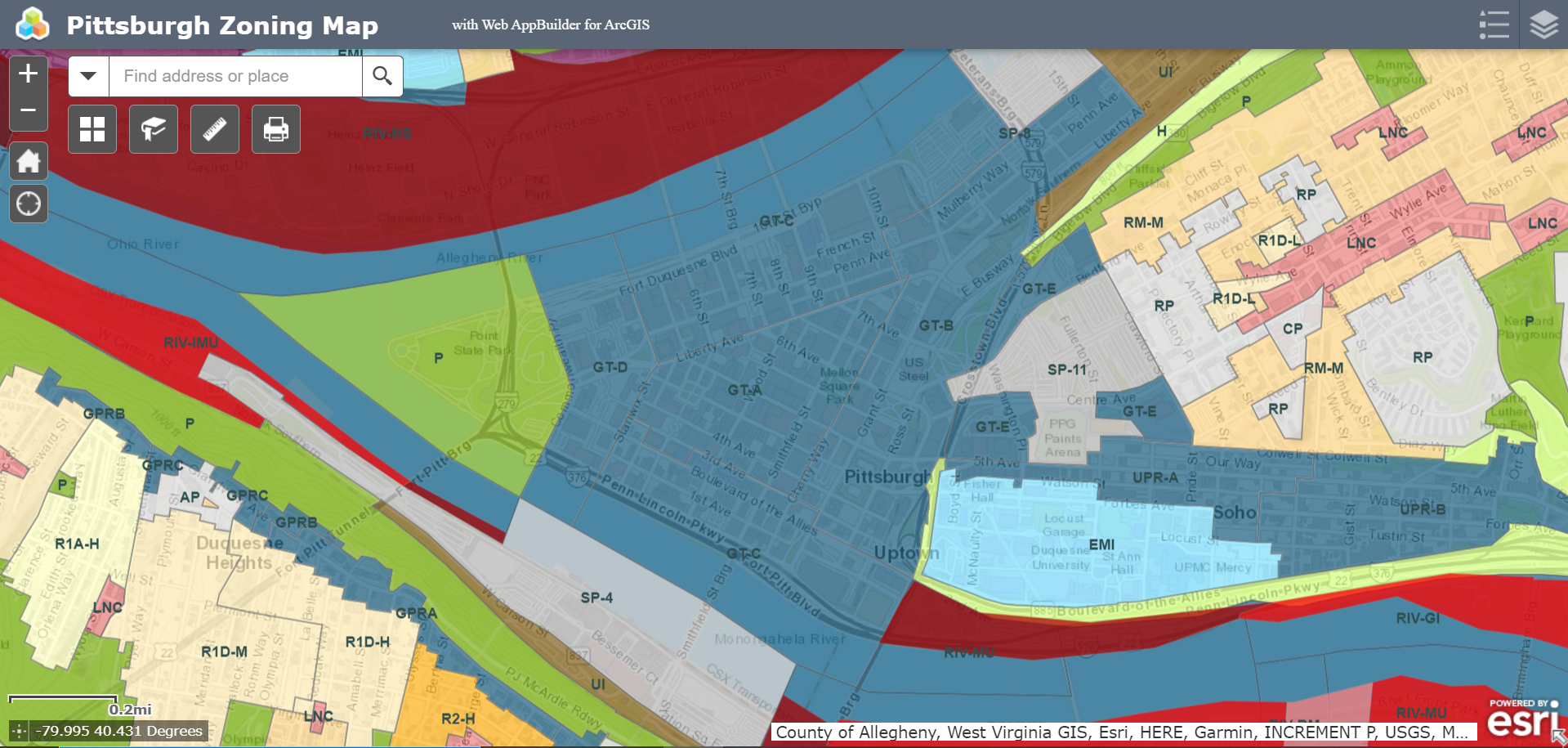Pittsburgh Zoning Districts - GT-E Overview
By Kathleen Oldrey
Introduction
Zoning districts are a fundamental building block of zoning regulations and set the base use, height, and density standards for the area they cover. In some cases, the district also sets the required level of zoning review. Pittsburgh has over 50 distinct mapped zoning districts. This series of guides is unpacking each of these districts.
In this post, we provide an overview of the GT-E (Golden Triangle Subdistrict E) zoning district. Additional posts dive into the density regulations for the GT-E and the use regulations for the full GT as well as provide overviews of the full GT and the other subdistricts: GT-A, GT-B, GT-C, and GT-D.
Refer to our Introduction to Pittsburgh’s Zoning Districts for the complete list of base zoning districts in the city. Pittsburgh’s interactive zoning map can be used to verify the project site’s zoning district.
Overview
The GT-E (Golden Triangle Subdistrict E) zoning district covers 0.05 square miles or 0.10% of Pittsburgh, and is made up of three non-contiguous areas separated by the SP-11 zoning district. One area is bounded roughly by I-579, Centre Avenue, Washington Place, and Fifth Avenue. The second area is bounded roughly by Centre Avenue, Crawford Street, and Colwell Street. The third area is bounded roughly by I-579, Crawford Street, and Bedford Avenue. The GT-E subdistrict areas border areas zoned GT-B, SP-11, P, UPR-A, RP, and RM-M.
Challenges
The GT-E subdistrict is impacted by all standards that apply to the GT district as a whole. The subdistrict’s purpose statement emphasizes the area’s role in transitioning between and connecting downtown and the Crawford Square neighborhood.
Unlike the other subdistricts of the GT, the GT-E is outside the Parking Reduction zone and regular parking requirements apply. Parts of the subdistrict are within the Potential Steep Slopes Overlay Area, which can require additional environmental review depending on whether the slopes are previously undisturbed.
The GT-E subdistrict is located within multiple RCO (Registered Community Organization) areas: the Hill District Consensus Group, the Hill Community Development Corporation, and the Hill District Collaborative. In cases where a development site is within multiple RCO areas and is required to undergo the RCO process, the Development Activities Meeting must include each group.
Conclusion
Like the other Golden Triangle subdistricts, the GT-E may be subject to procedural and environmental requirements that should be anticipated as potential parts of the review process.

